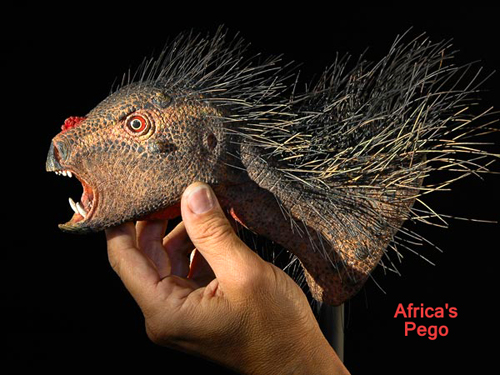
It’s common knowledge that man and his broader family of primates arose in Africa, but until now it was thought that the myriad of the earliest land life forms – particularly reptiles and dinosaurs – arose on the western hemisphere.
Last week dinosaur guru Paul Sereno of the University of Chicago confirmed that Pegomastax africanus lived in southern Africa about 200 million years ago.
The creature like all of the early dinosaurs at the beginning of their reign was neither large or meat-eating. With a presumed behavior and appearances more like a big reptile, the little parrot-headed creature was less than 2 feet long and hardly the size of a house cat.
It would be another 130-150 million years before the August creatures like Tyrannosaurus Rex ruled the earth, and then for a relatively short dozen million years or so before a giant meteor hit the earth and wiped them out.
But the creatures that attract museum members and figure prominently in child’s play all started much smaller. Large dinosaurs have been found in Africa, but few compared to those in the western hemisphere.
And Pego was actually found in 1983 and then its fossil got filed away in a Harvard cabinet. Sereno was recently combing through old fossils in Cambridge when he discovered this critically important piece that had been considered insignificant at the time.
Pego’s importance aside from its curious own anatomy and significance in filling the many gaps in the early dinosaur evolutionary line is that Africa now provides a similar age range of dinosaur finds that until now has been restricted to the western hemisphere.
Current science suggests the dinosaurs emerged in South America about 230 million years ago. The oldest finds have been in Argentina and they were similar in anatomy and size to Pego. As a species, though, paleontology suggests they exploded in North America around the time Pego lived, and over the next hundred million years or so began to radiate all over the world.
Well, perhaps not. Perhaps Africa provided parallel evolutionary tracts to South America, or perhaps Africa even contributed somehow to the emergence of the grandest beasts in North America.
Speculation might have to be left to us untrained enthusiasts, though. Looking back that far in time reduces the certainty of many presumptions. It’s just harder to know the actual weather, geology, existing full ecosystems than we can with the much later evolutionary story of primates to ourselves.
And the more primitive the life form (however big it might have been) may also mean that its ability to radiate was greater. It might have been easier for a reptile-like creature to have been thrown across the ocean on stick than for a monkey-like creature to have crossed a large lake.
Nonetheless, the great strides palaeontologists like Sereno have made in just this generation are truly mind-boggling. Early earth was much more elaborate show than we might have thought when I was a boy.
And Africa seems to be holding its own through virtually all of its wondrous ages.